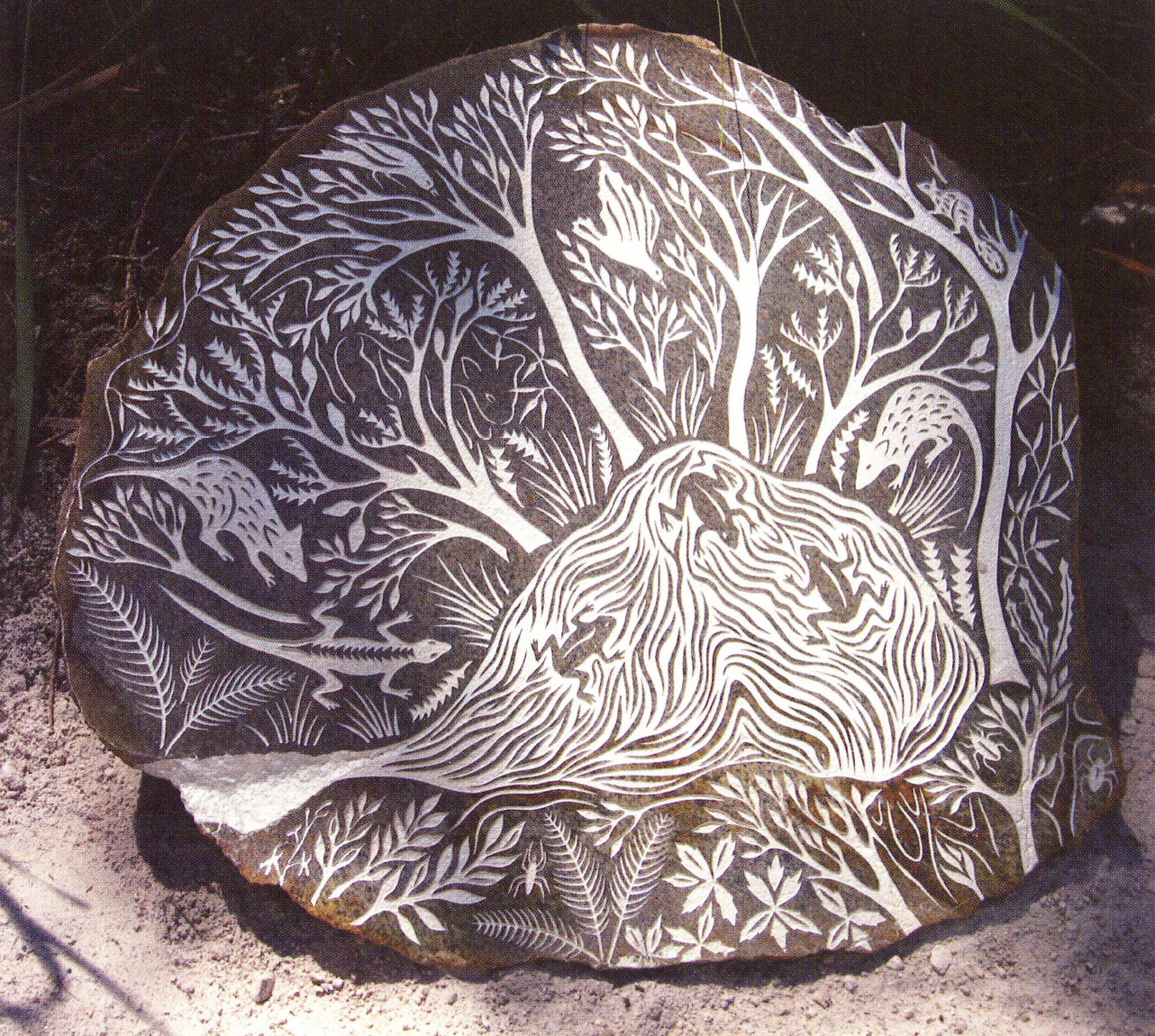
A community initiated and run project, the creation of this trail was driven by the zeal of resident Fiona Sinclair and a team of locals who raised substantial funds and commissioned visual artists, writers and musicians to use their chosen media to respond to the forest. The result is quite an achievement for the divided community of a small former logging town in the south-west, not in the least because of the way a multiplicity of media have been integrated to achieve an overall experience. The visitor wanders along a 1.2 km path through a pristine forest of Karri, Jarrah, and Marri trees equipped with an MP3 player listening to tracks on a compilation music CD, Canopy: Songs for the Southern Forest, or an audio tour of stories, poetry and commentary by the fifteen visual artists who have created permanent artworks along the way.
The problem with art placed in the forest is that the forest is so perfect already that the art can easily feel presumptuous, superfluous, definitely imposed, in some cases even invasive. One way to overcome this burden is to make artworks that really belong in the forest&are of the forest. Another is to construct something functional like a seat or a shelter, upon which one can rest pondering the greenness and meditating on the sound of birds and crickets. Warwick Backhouse's two exquisite leaf seats Calophylla and Marginata, blend seamlessly into the bush setting and provide respite to the traveller. They are carved in the shape of the leaf, and from the timber of the Marri and Jarrah, and supported upon local granite stones. They are placed on the trail in an appropriate place, surrounded by the species from which they came. Cascading Shelter by Tony Pankiw similarly echoes the forest and provides comfort. His organic steel form is inspired by birdwings, insects and leaves. It also directs rainwater from its roof into a vessel, giving something back to the resident fauna. However, the industrial nature of the steel is cumbersome and there is a not entirely welcome tension in its placement in the forest.
The pink metal trifid-like Sundew or Flycatcher by student Natalie Williamson doesn't suffer this fate as it looks like it grew there. It doesn't look like it belongs there but its imposition on the landscape is fully resolved as it wraps itself about the stump of a burnt out tree, creating a dramatic colour statement. Richard Kuhaupt introduces the human element with his layered and foreshortened Forest Folk lurking quietly amongst the undergrowth. Again they don't belong in the forest, they are imposed but their slightly sinister presence plays with that concept and their stratified forms reflect the many changing layers of the natural world. Albany based artist Kati Thamo's series Forest Stones uses sandblasted imagery on local granite and small bronze animal forms. The five stones are set in nooks with matching benches for children (and adults) to sit and listen to original music and stories by writer Diane Wolfer and various musicians. Thamo's stylised folk imagery of native birds, lizards and fauna camouflage the feral cat whose impact upon forest life is exposed in the storytelling.
The highlight of the opening week were the ephemeral artworks by five artists in residence including Cecile Williams, Olga Cironis and Susan Flavell. Williams' subtle interventions into existing phenomena (tree trunks) by placement of twigs and leaves were quietly sublime. Her stapling of tea tree twigs into bark employs twigs as staples and has a minimum impact on the environment. In contrast Lorenna Grant's permanent and awe-inspiring nest or halo of Karri sticks suspended 13m up a living tree uses steel suspension and fixings. It looks amazing but what ever does the tree think? Apparently it is the weight of a rhinoceros! I came away slightly disturbed by her work, bemused by the irony of the title, Whole, You Were Meant To Be Here, and with a greater appreciation for the less imposing works that were in harmony with the environment.
http://www.northcliffe.org.au/Sculpture%20walk/Sculpturehome.html












